Tame Impala, "Stranger In Moscow"
Tame Impala’s cover of Michael Jackson’s “Stranger in Moscow” sounds pretty much how you’d expect it to sound, which, for me at least, is great. If you have no expectations of what a Tame Impala cover of a Michael Jackson song should sound like I will take at least some of the blame for that, because a brief search indicates that we have not posted any previous work from Tame Impala here, which seems pretty crazy because back at the beginning of last year you could barely shut me up about “Feels Like We Only Go Backwards,” but clearly I did not see fit to share it with you which is just one more indication, if any were needed, of how bad I suck. I’m sorry. [Via]
Whitest White People Got Whiter: Report
“European humans have become ‘whiter’ in the past 5,000 years, undergoing a distinct change in their DNA due to natural selection, according to scientists.”
Real Life Lex Luthors: 5 Futuristic Projects of the Mega-Wealthy
by Awl Sponsors

This post is brought to you by the Jaguar F-TYPE Coupe. Visit BritishVillains.com to find out why it’s #GoodToBeBad.
It’s easy to understand the allure of wealth: luxury, power, autonomy.
But for a certain species of billionaire, great wealth also entails great responsibility — the relentless ambition to reshape the world and reimagine humanity’s future. In this article, we’ll visit futuristic projects from five of the world’s most storied billionaires. And just Like Lex Luthor, Superman’s brilliant nemesis, these modern day entrepreneurs are savvy, hyper-confident, and just a little off their rockers. Let’s get to it shall we?
PETER THIEL
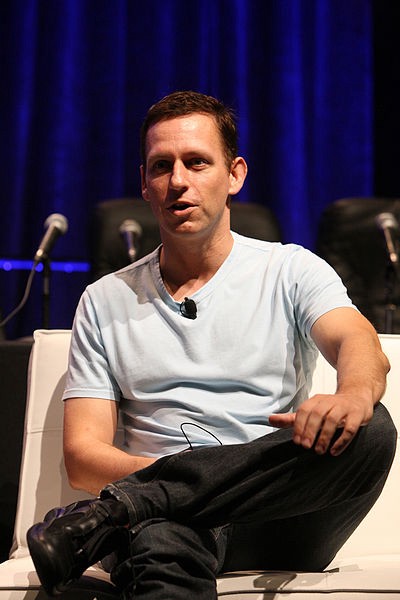
You may know Peter Thiel as the visionary tech mastermind who co-founded PayPal and invested early in a then-embryonic company called Facebook. But Thiel — who is worth upwards of $1.5 billion — has grander ambitions. As it turns out, the man who gets impromptu dinner invitations from Mike Bloomberg is also interested in breaking new ground in the frontier of science.
Thiel’s Breakout Labs invests in a company called Stealth Biosciences, a nanotechnology company. According to Stealth CEO Ari Chaney, “Thanks to the vision of Breakout Labs, we can now concentrate on building Nanostraw devices that can be used to reprogram T-cells for cancer therapy [and] produce stem cells efficiently and safely.” That’s right, we’re talking about microscopic machines that reprogram and heal cells in the body.
If that wasn’t enough, Thiel — also a libertarian — is working with other very rich people to build futuristic floating cities. Here’s the Seasteading Institute’s blurb:
That’s why we work to enable seasteading communities — floating cities — which will allow the next generation of pioneers to peacefully test new ideas for government. The most successful communities can then inspire change in governments around the world. We’re opening this new frontier because humanity needs better ways to live together to unlock our full potential.
According to Seasteading’s 85-page implementation report, the autonomous, mobile cities might look a little something like the image below.

Somewhere the ghost of Ayn Rand is swooning.
ELON MUSK
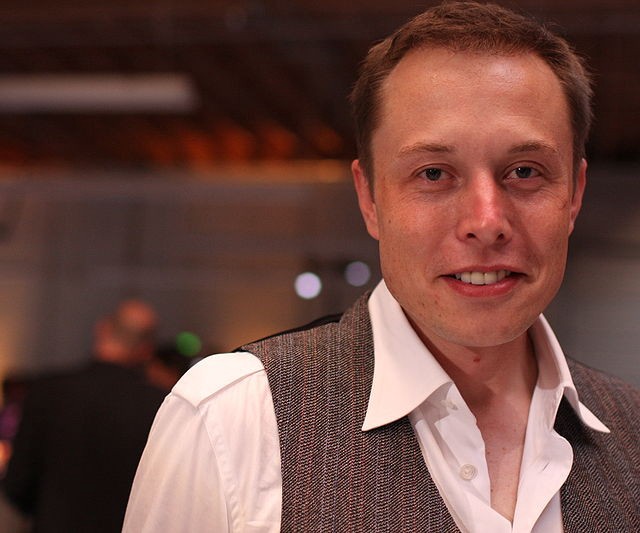
The second ultra-wealthy PayPal co-founder on our list. Elon Musk is no stranger to high stakes investing. In 2010 he gambled what was left of his $180 million PayPal fortune in order to build the Model S — a “zero emissions, zero compromises” car that runs completely on electricity.
He’s at it again with Hyperloop, a futuristic, hyper-fast transportation system that Musk describes as a “cross between a Concorde and a railgun and an air hockey table.” It’s a kind of ‘sky train’ that propels transportation pods through a tube using an ultra-thin layer of air, just like an air hockey puck. Here’s wikipedia with all of the relevant facts, which are, by the way, insane.
The conceptual route runs from the Los Angeles region to the San Francisco Bay Area, paralleling the Interstate 5 corridor for most of its length, with an expected journey time of 35 minutes, meaning that passengers would traverse the 354-mile (570 km) route at an average speed of around 598 mph (962 km/h), with a top speed of 760 mph (1,220 km/h).
That’s just under the speed of sound. A white paper is projected to be completed March 2014, and if all goes according to plan, Musk will begin working on a prototype.
The future is here. Well, almost.
LARRY PAGE AND SERGEY BRIN AND ERIC SCHMIDT
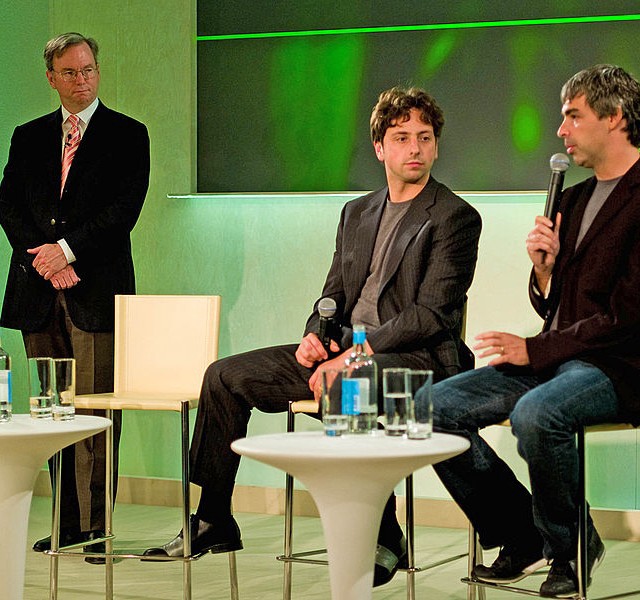
We all know Larry Page and Sergey Brin as the men who invented the internet. That’s right, Page and Brin are the cyborg duo who created Google. But they have their robot hands in more pies than just the search engine one.
In 2008 Brin invested in a company called Space Adventures, which allows individuals to reserve seats on future orbital spaceflights.
“I am a big believer in the exploration and commercial development of the space frontier, and am looking forward to the possibility of going into space,” Brin said on a Space Adventures press release announcing his involvement with the company. I’m sure everyone thought that was pretty neat at the time. But just four years later, Page — along with Google and Executive Chairman Eric Schmidt and James Cameron (!) — announced something much crazier.
They announced that, by the year 2022, robots will be engaged in space mining operations. The venture, which is called Planetary Resources, is essentially a robotics company specializing in cheap, low-cost machines that will fly in to the air, land on a planet, and begin extracting its sweet, precious contents. Everything, they say, from platinum to real estate.
Oh yeah, and eccentric Texas billionaire Ross Perot is also involved. What’s not to like?
SIR RICHARD BRANSON
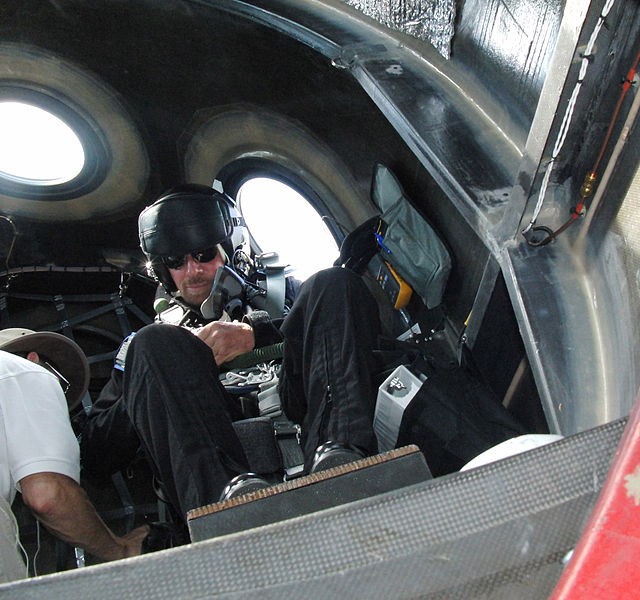
Sir Richard Branson is one of those iconic CEOs whose personal style almost eclipses his preternatural business acumen. In fact, Branson is *this* close to being a caricature of the billionaire playboy who jet sets throughout life without a care in the world. Case in point: he owns and operate his own private island, to say nothing of the string of world record attempts he has participated in since 1986 (beginning with a shipwrecked attempt at “fastest Atlantic crossing”).
From the humble beginnings of a mail-order record business Branson founded in the 70s, to the 400+ companies that now comprise Virgin Groups, Branson always did think big. And now he wants to make commercial space travel a reality for everyone.
In April of last year, Virgin Galactic’s SpaceShipTwo achieved Mach 1.22 during its first rocket powered flight, becoming the first commercial vehicle since the Concorde to break the speed of sound — a huge step toward actualizing the dream of commercial space travel. Even the OGs of space travel, NASA, are getting in on the action, having signed a deal to charter one to three flights for research missions.
JEFF BEZOS
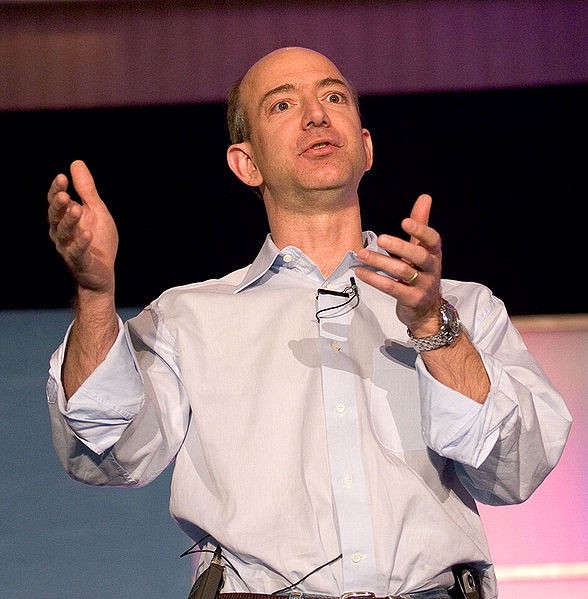
This article could have easily been titled “Libertarians in Space” and I’m still not convinced it shouldn’t be. Jeff Bezos, the powerhouse behind Amazon.com, reportedly tried to dismantle his own crib as a toddler. And it makes sense: Bezos has always been a philosophical libertarian trying to dismantle one system or another (Amazon famously exploited a tax loophole that allowed the business to avoid collecting sales tax in order to drive its prices below its competitors). But I digress!
For Bezos, planet Earth is just another crib holding humans back. And he’s betting big on the future of space travel. As high-school valedictorian, Bezos aspired to develop space hotels, amusement parks and colonies for 2 million or 3 million people orbiting the Earth. According to the Blue Origin website, Blue Origin is
“…developing technologies to enable human access to space at dramatically lower cost and increased reliability. This is a long-term effort, which we’re pursuing incrementally, step by step. We’re currently focused on developing reusable launch vehicles utilizing rocket-powered Vertical Take-off and Vertical Landing (VTVL) technology.”
Wild. Of course, Bezos isn’t just a passionate space man — he’s also a business man. “My passion is for space, for sure, but I do think this can be made into a viable business.”
The Porn Innovators Of Today

“BuzzFeed is like the porn industry in the ’90s. All online marketers watched what the porn people did from a marketing and technology standpoint because they were always on the cutting edge. That’s where a lot of the marketing and advertising techniques that made it into the mainstream in the early 2000s came from.” [Via]
Beer-Drinking Bear Chaser Comes Clean

“After telling wildlife officers and reporters in late February that he brawled with a Florida Black Bear that slammed him to the ground by his pants, [36-year-old Lake County resident Joshua Hennessy] then wrote a sworn statement that was much less dramatic…. ‘I was sitting in my chair outside … drinking a beer and I saw a bear run by the house and for no good reason at all, I jumped up and started chasing it … and tripped over a speed bump and fell.’ That’s what Hennessy wrote in a statement to the Florida Fish and Wildlife Conservation Commission. He will not face charges, authorities said, though by his own admission he molested wildlife.”
What A Wonderful World Of Whimsy We Live In
“An article last Thursday about homeowners who decorate their houses based on the films of the director Wes Anderson misspelled the given name of a woman who organized a birthday party for her husband based on Mr. Anderson’s movies. She is Alix Bannon, not Alex. The article also misstated her age; she is 30, not 31.”
You Slept With Too Many Men At Work, And Other Reasons Why You Ladies Are Single
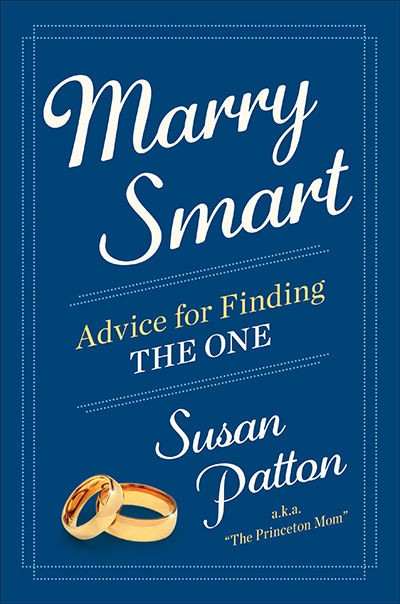
Show Susan Patton a career girl who thinks she’ll find the man of her dreams at the office, and she’ll show you a future “old lady with cats.” “Women tend to be attracted to men at work who are older than they are and more senior,” she says. “When those love affairs end — and they almost always end — it’s the junior-position woman who is forced to find a new job or remain there feeling awkward.” Besides, you shouldn’t be “fishing off the company pier,” anyway.
— That person who called you all whores a year ago is back with a whole book of whore-calling! Damn she really has it in for cats too.
How Can Unions Win?
by David Burr Gerrard
Kevin Bacon’s new video imploring millennials to raise their 80s awareness did not mention Billy Bragg’s 1986 song “There Is Power in a Union,” but the idea that there is any power in a union probably seems as remote to many millennials as parachute pants or the White Pages. Actually, this is probably true of anyone born after about 1965. It’s been a long time since we have thought that most workers can realistically be something other than lone and lonely individuals forced to accept whatever terms of employment they can find and hope not to get fired.
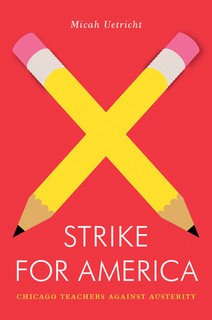
Strike for America: Chicago Teachers Against Austerity is is published by Verso’s Jacobin series and available wherever people have been taught by teachers to read.
• Amazon
Previously in this series:
Discussing the labor of sex work with Melissa Gira Grant.
Returning to Marxism with Ben Kunkel.
Micah Uetricht is 26. After working for two years after college organizing car wash workers for Arise Chicago, Uetricht turned his attention to the Chicago Teachers Union and its fight against Chicago Mayor Rahm Emanuel. Strike For America, his book about that fight, and the 2012 strike that resulted — a strike that the jacket copy characterizes as “America’s most important domestic labor struggle in decades” — has just been published.
That Emanuel had previously served as President Obama’s chief of staff underscores the increasingly antagonistic relationship of teachers unions to what was once their connection to political power, the Democratic Party. Uetricht writes that, under these conditions, teachers unions faced a choice between being deferential to “the neoliberal politicians and titans of capital who wanted to destroy them” and “confront[ing] those enemies head-on, with militant tactics like strikes and deep organizing within communities.”
The Chicago Teachers Union (CTU) — led by Karen Lewis and the Caucus of Rank-and-File Educators (CORE), an assertive faction that had taken control of the union — chose the latter strategy. And it succeeded — more or less. Uetricht identifies as one of the major strengths of the leadership of Karen Lewis and CORE an honesty about what is achievable in a time hostile to unions in general and teachers unions in particular. Though the teachers did not win the thirty-percent raise they sought, the Chicago Tribune wrote at the time that Lewis “argued that the union had successfully rejected Mayor Rahm Emanuel’s attempts to institute merit pay, fought off more stringent requirements in a new teacher evaluation system and secured a recall policy for top-performing teachers who are laid off because of school closings.”
Briefly but thoroughly, Uetricht takes us through the way that Lewis and her caucus gained power in the union and then built towards the strike. Though early chapters, devoted to internal union battles, are occasionally overstuffed with an alphabet-soup of acronyms (CTU, CORE, UPC, PACT), the book is worth sticking with. If unions are to reclaim the status they deserve, they will need a strategy to do so, and this book outlines one potential model. There may or may not be power in a union at the moment, but there should be, and this book makes you think that there can be.
You wrote an article recently called “Nice Unions Finish Last,” and that seems to be a theme of this book as well.
Throughout American history, there have been attempts to cuddle up to the bosses and to management, and to think we can win things from them by appearing to be reasonable. Management never gives up on wanting to get whatever they want, pay whatever they want. Corporations bide their time until unions have been lulled into decreased militancy. Once the unions are unable to fight back, and the culture of struggle is gone, corporations and management just run roughshod.
You also talk a lot about how 21st century unions have to be integrated into larger social justice movements, and can’t just be about bread-and-butter issues.
That’s especially true of teachers unions, and public-sector unions generally. When you’re going on strike, and instead of not making widgets anymore you’re leaving kids without an education, the only way for that not to be seen as a public temper tantrum is to make those kinds of actions not just about yourself, but about the kids, about the broader community. About your patients, if you’re in healthcare. That’s wise on a strategic level — it’s how you gain support rather than staying isolated — but it’s also the right thing to do. Unions should be fighting on behalf of the entire working class, not just their own narrow parochial interests.
And how do you see teachers achieving this?
The CTU gives a compelling example of how to do this. A group of teachers within the Union took on their old leadership. Rank-and-file teachers fought alongside community members against free-market education reform.
Communities have to be treated as equals. There’s a long history in American teachers unions of not doing that. There are some really sordid histories of unions coming into conflict with parents, particularly parents of color.
You mention that the contract that CTU won was still not perfect.
Part of the union’s strength was in treating its members like adults. This is a time of austerity, and unions are waging largely defensive battles, so of course there are concessions. In the past, union leaders might have said: “This is the most perfect document we could have ever hoped for!” The rank-and-file would rebel at being sold a bill of goods. The CTU was open about the contract’s flaws, and members were grateful. The real victory here was not the contract, though some important things were won. The real victory was showing how to fight back against this agenda in an unprecedented way. It showed people that regular teachers could take over their union and fight back against someone like Rahm Emanuel, one of the most powerful figures in the Democratic Party.
Do you see any hope for teachers unions and unions in general to regain a serious foothold in the Democratic Party?
The way most union leaders have seen to get the Democratic Party back on their side is to be those “reasonable people,” and to cede important issues. [American Federation of Teachers President] Randi Weingarten has ceded all kinds of ground on merit pay. She thinks that people will say: “We see Randi being reasonable, we’ll invite her to the table.” In fact, you have to wrest the power from these people’s hands, you have to show them that you’re a force to be reckoned with and that there are real consequences to following a right-wing path. If those lessons spread, as they have started to in Newark and elsewhere, the Democratic Party will have no choice but to listen. That’s not going to come from playing nice; that’s going to come from strength.
Could you talk about your book in the context of Jacobin?
Jacobin is about reestablishing a left-wing pole in American politics. We think that that’s an incredibly valuable tradition that should not be lost. This is done through contributing to intellectual debates, but also through producing pieces that can be of use to average people.
The right wing has long understood the value of a strong right flank. That pulls the debate to the right. What’s happened with the left mirrors what’s happened with unions: the left thinks that the way to be victorious is to appear reasonable rather than to have audacious and unapologetic left-wing visions of the future.
When I interviewed Ben Kunkel about his book for Jacobin on Marxist theory, he said he thought his book was almost antiquated because of Jesse Myerson’s piece in Rolling Stone, which listed specific solutions.
I thought that was an important moment, when Jesse put that out. Despite the vehement right-wing reaction to the piece, there was also an extremely positive reaction. People aren’t scared of the epithets that are being slung at Jesse. They’re not afraid of socialism. Part of our contribution, meager though it may be, is to keep pushing that, and to encourage people not to be afraid of ideas like the ones Jesse put forward in that article.
You also talk about Occupy, and how its anarchist roots stopped it from formulating demands.
I didn’t mean that to denigrate the Occupy movement. Occupy was somewhat incoherent, but it was an important expression of anger. The CTU strike identified that anger and put it into an effective political form that could push back against Rahm Emanuel and win some tangible demands. So it’s not thumbs-up to CTU, thumbs-down to Occupy. CTU is the sort of thing we need to turn the anger expressed by Occupy into tangible political victories.
You also talk about how Occupy cheered on teachers as they struck.
Yes, and the CTU wasn’t afraid to use some of Occupy’s rhetoric, to use that spirit. CTU wasn’t afraid to name who their enemies were.
Could you talk about that, the importance of naming things?
In political organizing you need an enemy, and enemies do exist. Teachers weren’t just angry at a general idea of neoliberalism being expressed through education reform. They were angry that Rahm Emanuel was screwing them. They were angry that billionaire education reformers had cast them as the people holding America’s children down. You can’t win anything unless you have a clear enemy that you’re fighting against.
What made you write this book?
I was so moved emotionally by seeing what teachers were able to accomplish. Strikes have for so long had a cloud of inevitable defeat, and you’re only negotiating the terms of how badly you’re going to lose. CTU made it feel like you could actually win these things. I’m only 26, but this was different from anything else in my lifetime.
Do you think of yourself as a journalist now?
I imagine I’ll return to the labor movement. Writing is a very lonely pursuit; it’s just you and your computer. The labor movement is much more collaborative, and that’s where I feel comfortable.
Do you see hope for something like this happening in New York?
New York has the Movement of Rank-and-File-Educators, which, starting with the name, is explicitly modeled on CORE. Things are more difficult in New York. There’s much more discipline in the ruling faction. The only reason that CORE won was that there a fight within the old guard, but there’s no indication that that kind of opportunity exists here. That said, the Movement of Rank-and-File educators has done amazing work, and has started down the long road that CORE traveled. Elsewhere — in Newark, for instance — there’s been more movement.
Even in places where there aren’t these kinds of caucuses, they’ve certainly recognized the piece about working alongside communities. In Chicago, one of the first things the new leadership did was produce a document called “The Schools Chicago’s Children Deserve,” which put forward a positive agenda of what education reform can and should look like. Since then, there’s been “The Schools Portland’s Children Deserve,” “The Schools Philadelphia’s Children Deserve.” People recognize that community engagement is required.
What makes CORE different from their old leadership isn’t just the existence of a leader like Karen Lewis who was willing to go toe to toe against Rahm Emanuel. People say, oh you needed a big personality like Karen Lewis to go up against a big personality like Rahm Emanuel. CTU succeeded not because Karen Lewis is willing to yell at Emanuel, although that is important, but because CTU totally changed the union’s relationship to the 26,000 members of their union. They made sure that the members were the ones pushing the agenda. The old reform caucus brought in a few people who thought that they could do better.
CORE said no, the rank-and-file are the ones who will be making the decisions in this union. That’s important not because democracy is good in some abstract way; it’s important because that’s how the fight back against corporate education reform can happen. When Karen Lewis says something, Rahm Emanuel knows that there are 26,000 members behind what she says, and that what she says is an accurate reflection of what’s believed by 26,000 voters, 26,000 people ready to get out in the streets.
Standardized tests are clearly one of the focal points of this entire debate. Could you talk about them a little more?
It’s clear that there’s this obsession with data and metrics around these school reform attempts. Teachers repeatedly say that they’re not opposed to sensible metrics, but there’s an obsession with them that comes at the detriment of real learning. Teaching becomes about rote memorization of the stuff that’s going to be on the test. That data is then going to be used not to improve a teacher’s teaching, but to close the school down, or to blame the teacher for supposedly poor performance.
Standardized tests have deprofessionalized teaching, deskilled it. They make teaching a joyless activity. You have to clamp down on any natural curiosities that arise. Maybe students are interested in dinosaurs; dinosaurs are not on the standardized tests.
I think it’s a big deal in Chicago right now that a group of teachers are holding a boycott of a standardized test called the ISAT. That’s a direct result of this empowerment that teachers have felt, of this ascendant feeling they can push back against these things that have debased their profession.
Can you talk more about teaching as a profession, the joy of it?
I’m not a teacher, so I’m not the best person to talk about that, but no one goes into teaching to administer standardized tests. People who go into teaching make massive sacrifices — of their time, financially — because they really believe in teaching. Parents know that; that’s why the campaign led by neoliberals and the right wing to demonize teachers as lazy and overpaid hasn’t really caught on among average Americans, because people have a gut sense that no one goes into that profession out of laziness or greed. They do it because they care about children. That’s the only thing that could make them sink the kind of hours they do into their jobs.
So there’s pushback against attacks on teachers’ tenure and how much they get paid, and there’s pushback against efforts to drain all the joyful aspects out of the teachers’ profession.
So. I want everyone who reads this interview to Google you and buy your book and read the rest of your work, but when they Google you they’re going to come across the polar vortex video.
(Laughs) Yes, they are. What’s your question? I hope it’s not: how is your penis?
I guess my question is: why did you upload the video?
I ask myself that every day.
David Burr Gerrard’s debut novel, Short Century
, is out this month from Rare Bird Books. This interview has been condensed and edited.
New York City, March 11, 2014

★★★★ Cirrus clouds slid along the sky at a noticeable but unhurried pace. Birds were singing. Hazy and dazzling morning sun glinted on the little smooth grains in the sidewalk concrete. Down in the subway station, out of the bouncing light, there was a deep, lingering chill. It was worth overshooting Broadway/Lafayette to walk up from Grand Street with a cup of Hong Kong tea. The light hit the trees above Kenmare and discovered shades of green emerging from the brown of their upper branches. People sat out at sidewalk tables in the afternoon, wearing light jackets. A man crossed Prince Street wearing flower-print shorts and boat shoes without socks. A silver glow lay over Lower Manhattan. Up at Columbus Circle, One57 looked like an unconvincing rendering, jutting flatly and singly up behind the textured collective of the older, humbler skyline. Broccolini in a hot pan set off the smoke detector, and the fresh evening air blowing through the opened window was delicious.
